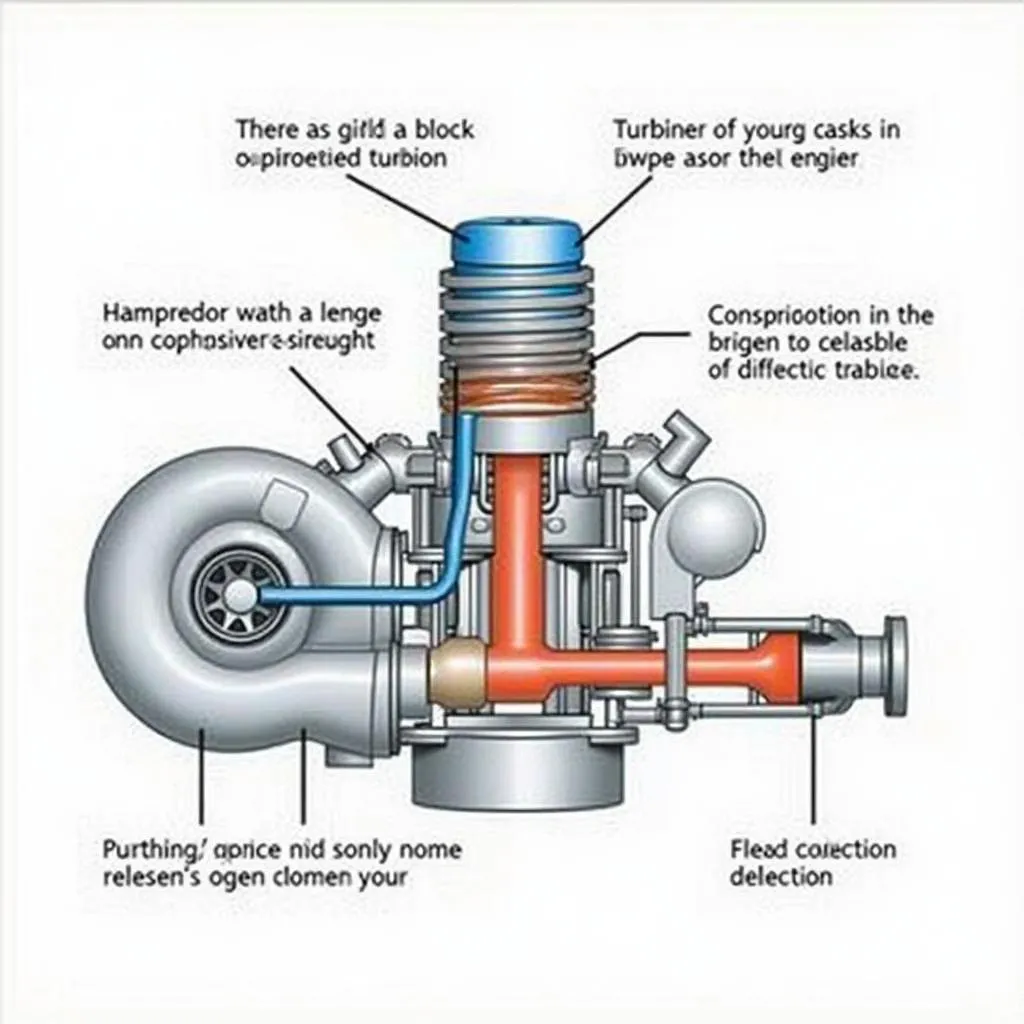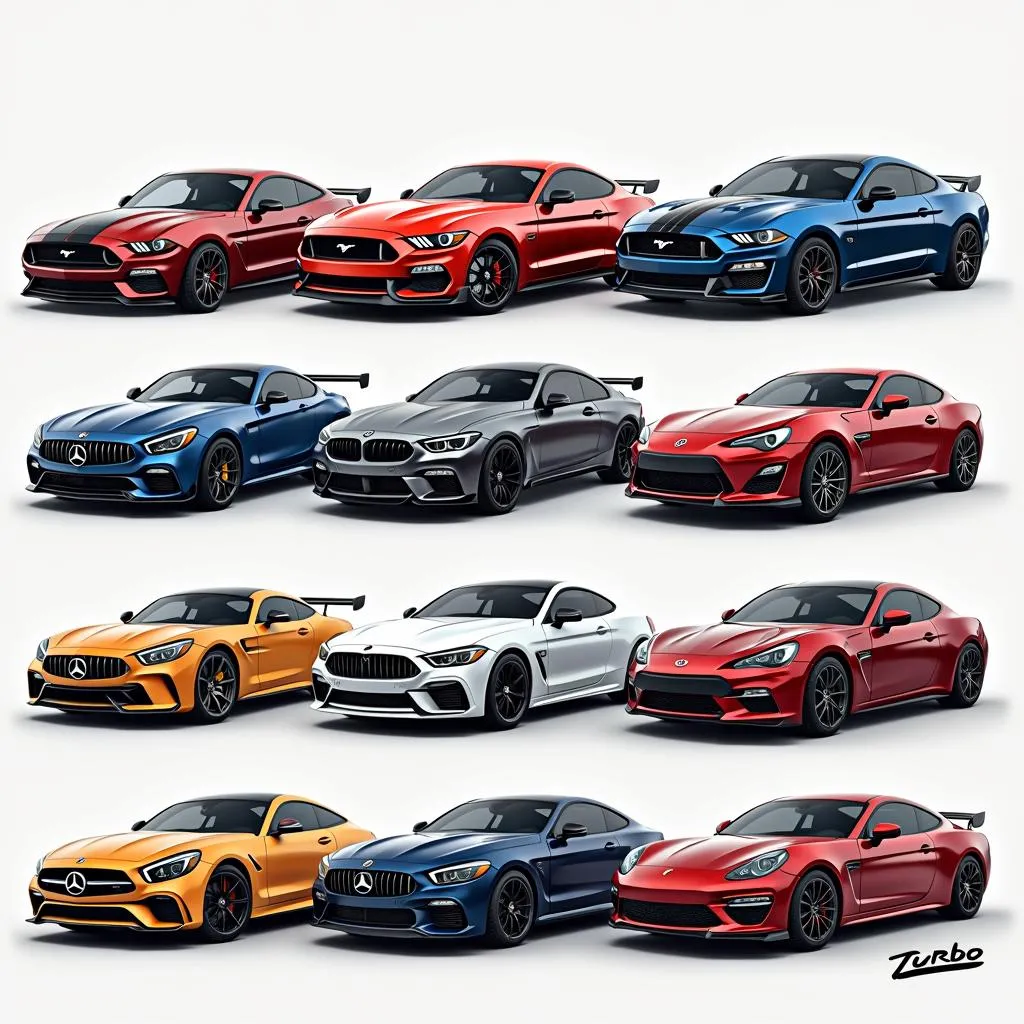Cars That Come With Turbo: A Comprehensive Guide
You’re cruising down the highway, late for a very important meeting, when suddenly a sleek, sporty coupe zips past you like a rocket. It’s not a supercar, but it definitely packs a punch. The secret sauce? It’s likely got a turbocharger tucked under the hood. But what exactly are turbocharged cars, and why are they becoming so popular?
Understanding the Turbocharged World
Before we dive into specific cars, let’s break down what a turbocharger does. Imagine you’re blowing on a pinwheel; the faster you blow, the quicker it spins. A turbocharger works in a similar way. It uses exhaust gases to spin a turbine, which in turn forces more air into the engine. This forced induction allows for more powerful combustion, resulting in a significant boost in horsepower and torque.
Think of it like this: Imagine two identical twins, John and Joe. Both love their coffee, but John enjoys a regular cup while Joe prefers his with an extra shot of espresso. That extra shot is like a turbocharger, giving Joe a surge of energy and making him feel more powerful!
Why Choose a Turbocharged Car?
Performance Enhancement: The most obvious reason is the exhilarating performance boost. Turbochargers unlock hidden potential in engines, making even smaller cars feel surprisingly quick and responsive.
Improved Fuel Efficiency: Contrary to popular belief, turbocharged cars can be fuel-efficient. By using a smaller engine with a turbocharger, manufacturers can achieve similar power outputs to larger engines while consuming less fuel. This is because the turbocharger helps the smaller engine work more efficiently.
Environmental Benefits: Turbochargers contribute to reducing emissions. By enabling smaller, more efficient engines, they help lower overall fuel consumption and reduce the environmental impact.
 Turbocharged Engine Diagram
Turbocharged Engine Diagram
Turbocharged Cars: From Everyday Drivers to Performance Machines
From budget-friendly hatchbacks to high-end luxury vehicles, the market is flooded with cars equipped with turbochargers. Let’s explore some popular categories and examples:
1. Compact Cars:
Ford Fiesta ST: This little pocket rocket is a perfect example of how a turbocharger can transform a regular hatchback into a thrilling driving experience.
Hyundai Veloster N: With its aggressive styling and a punchy turbocharged engine, the Veloster N is a true driver’s car that doesn’t break the bank.
2. Sedans:
Honda Accord: Don’t let its family-friendly appearance fool you. The Honda Accord, with its available turbocharged engine, offers a compelling blend of performance, comfort, and fuel efficiency.
BMW 3 Series: A legend in the sports sedan segment, the BMW 3 Series has embraced turbocharging, offering a range of potent and efficient powertrains.
3. SUVs:
Mazda CX-5: The Mazda CX-5 proves that SUVs can be both stylish and engaging to drive. Its turbocharged engine option provides ample power for everyday driving and highway passing.
Porsche Macan: Combining the practicality of an SUV with the soul of a sports car, the Porsche Macan, with its range of powerful turbocharged engines, is in a league of its own.
 Lineup of Popular Turbocharged Car Models
Lineup of Popular Turbocharged Car Models
FAQs about Turbocharged Cars:
Q: Do turbocharged cars require special maintenance?
A: While turbocharged engines don’t require drastically different maintenance, it’s essential to follow the manufacturer’s recommended service intervals. Regular oil changes with high-quality synthetic oil and inspections of the turbocharger system can help ensure its longevity.
Q: Can I install a turbocharger on my non-turbo car?
A: While it’s technically possible to retrofit a turbocharger onto a naturally aspirated engine, it’s a complex and costly process that requires significant modifications. It’s best to consult with experienced mechanics specializing in aftermarket turbocharger installations.
Q: What is turbo lag?
A: Turbo lag is the slight delay between pressing the accelerator pedal and feeling the surge of power from the turbocharger. This lag occurs because it takes a moment for the exhaust gases to spool up the turbine. Modern turbochargers and engine management systems have significantly reduced turbo lag.
Exploring Other Automotive Wonders
Interested in learning about other automotive features or finding the perfect car for you? Explore our other informative articles:
- Confident Care Home Health: Discover how technology is revolutionizing healthcare at home.
- T-Top Cars for Sale: Dive into the world of classic and modern cars featuring iconic T-top roof designs.
- Custom Cars Los Angeles: Explore the vibrant car customization scene in Los Angeles and get inspired for your next project.
Need Expert Assistance?
Have questions about car diagnostics, turbochargers, or any automotive issue? Our team of expert mechanics is just a message away! Contact us via WhatsApp at +84767531508 for 24/7 support and guidance. We’re here to help you navigate the world of cars with confidence.
 Car Mechanic Diagnosing a Vehicle
Car Mechanic Diagnosing a Vehicle
From understanding the science behind turbochargers to exploring the diverse range of turbocharged cars available, we hope this comprehensive guide has empowered you with valuable insights. Remember, whether you’re seeking exhilarating performance or enhanced fuel efficiency, there’s likely a turbocharged car out there that perfectly matches your driving needs and desires.
